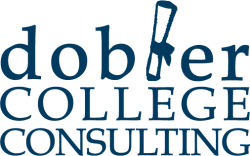What You Need To Know About Scholarships
 With the frenzy of early application deadlines finally winding down, I had a chance to participate in the #CollegeCash chat on Twitter the other night. For those of you not familiar with Twitter, chats are where people using the same hashtag (#) can talk about a topic. On Thursday nights, Jodi Okun, founder of College Financial Aid Advisors, hosts the #CollegeCash chat. Since she’s in California, the chat doesn’t start until 10PM EST. It’s a little late for those of us here on the East Coast, but the chat is always worth it.
With the frenzy of early application deadlines finally winding down, I had a chance to participate in the #CollegeCash chat on Twitter the other night. For those of you not familiar with Twitter, chats are where people using the same hashtag (#) can talk about a topic. On Thursday nights, Jodi Okun, founder of College Financial Aid Advisors, hosts the #CollegeCash chat. Since she’s in California, the chat doesn’t start until 10PM EST. It’s a little late for those of us here on the East Coast, but the chat is always worth it.
Last night’s chat about college scholarships was with Tamara Krause of ScholarshipExperts.com. It was a great conversation and there were several takeaways that I wanted to share with you today:
1. If you know what you want to major in, you should start looking for scholarships through professional organizations and associations affiliated with that field. For example, here’s a list of scholarships offered through the American Institute of CPA’s (AICPA) for students interested in majoring in accounting.
2. To narrow down internet search results, trying searching more specifically such as “engineering scholarships 2013 2014”.
3. Make good use of social media. The ScholarshipExperts.com Pinterest board has over 600 scholarships!
4. Beware of scams. It should never cost you more than a postage stamp to apply for a scholarship. Also NEVER give out your social security number or bank information.
5. Start your search locally and be prepared to do the work that other students won’t. Check out scholarship opportunities through employers, your church, local organizations, your bank or credit union, the town library and, most importantly, your guidance office.
6. Searching for scholarships is like a part-time job. It’s not a one and done deal. The more you search and the more you apply, the more likely you are to win something.
7. Scholarship searching is also a great job for parents who want to be involved in the process.
8. If you have to write an essay, apply the same rules as an essay for college applications: Grab the reader’s attention in the first two sentences and tell a story. If your essay bores you, it will most definitely bore the scholarship selection committee person who has to read it.
9. Start your search early and continue with it on a regular basis. There are actually scholarships out there for elementary school students!
10. Look for livelines versus deadlines. Find out what the earliest date is you can apply and apply on that date. Be the one to lead the pack of applications!
At the end of the day, scholarship searching is a process and a time-consuming one at that. Pace yourself and stay positive. Also keep in mind that private scholarships can often affect your financial aid award. Colleges treat scholarships differently, but some will reduce your merit scholarships dollar for dollar for each private scholarship that you earn. If your merit award is renewable (and most are as long as you maintain a minimum GPA), sometimes you need to approach scholarship searching very strategically.
Here’s an excerpt from a recent MarketWatch article about this issue:
“The findings by the National Scholarship Providers Association also point to how colleges treat outside scholarships when they’ve already given their students free aid. According to the NSPA, many colleges will take back the free aid they offered students who end up receiving an outside need-based scholarship.
In some cases, it is a dollar-for-dollar reduction that equals the amount of the scholarship. So students who get a $5,000 private scholarship could end up losing $5,000 in free aid that a college has offered them, which would leave them with the same out-of-pocket costs that they had before they received the scholarship.”
So, if you’re unsure of how colleges will treat private scholarships, give them a call and ask. It’s better to know up front before you invest a lot of time in your scholarship search.
If you want some help and guidance on your college search and application process, contact me today to set up an appointment for a free consultation.



